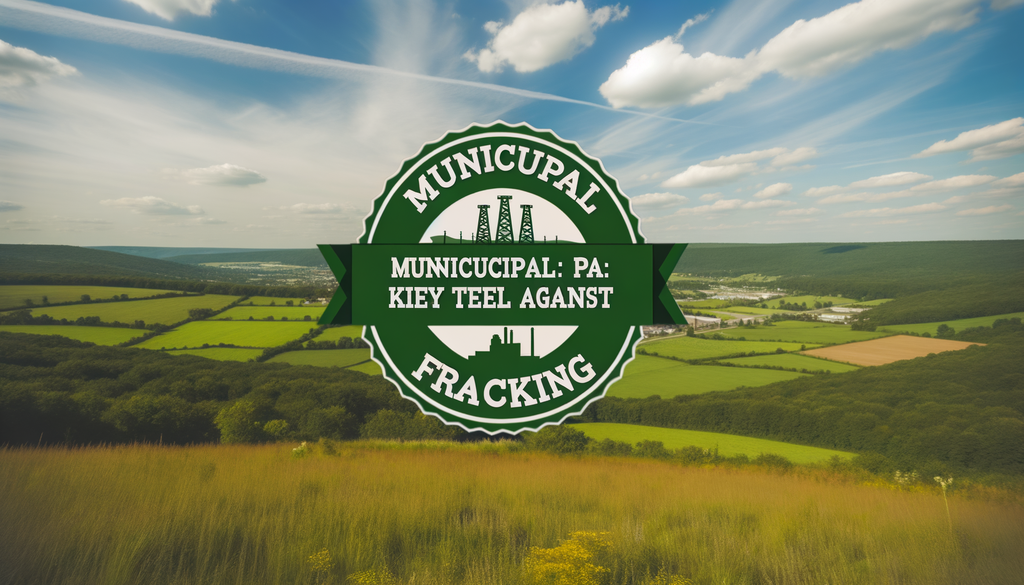Understanding the Municipal Ordinance Project: PA’s Greatest Tool to Drive Change
As a company deeply involved in the oil and gas sector, Teknologam Sdn Bhd recognizes the growing importance of municipal governance in shaping sustainable industrial growth. The municipal ordinance project stands out as Pennsylvania’s most effective tool for regulating development, protecting resources, and balancing community and business interests. With the evolving regulatory landscape, understanding these projects, the concerns around fast-tracking infrastructure, and the role of local advocacy is crucial for industry stakeholders.
The municipal ordinance project serves as a strategic mechanism for Pennsylvania to oversee and guide local development effectively.
Fast-tracking large-scale projects in regions like British Columbia raises significant environmental and social concerns.
Public participation, demonstrated through mechanisms like the municipal ordinance project interest form, strengthens the capacity of communities to influence decision-making.
Legal challenges, such as Metro Vancouver’s unsuccessful attempt to delay a sewage plant court ruling, highlight the complex dynamics between municipalities and provincial governments.
Organizations like Food & Water Watch demonstrate the critical role of grassroots movements in safeguarding natural resources amid industrial growth.
The Municipal Ordinance Project: A Strategic Asset for Pennsylvania
Pennsylvania’s municipal ordinance project empowers local governments to enact tailored regulations that address community-specific needs. This project enables towns and cities to manage zoning, environmental protection, and industrial expansion more effectively. It creates a framework where public input, environmental evaluation, and industrial considerations converge. For companies in oil and gas, proactive engagement with municipalities can reduce project delays and ensure compliance.
~ Key features of the municipal ordinance project include:
- Localized control over land use
- Streamlined permitting processes when aligned with ordinances
- Enhanced transparency through public notice and input
Key Insight: Embracing municipal ordinances as part of project planning fosters stronger community relations and regulatory alignment, which is essential for long-term operational success.
Navigating ‘Horrific Impacts’: Fast-Tracking in British Columbia
As British Columbia prepares to accelerate infrastructure projects, repeated warnings about ‘horrific impacts’ have surfaced. Fast-tracking can short-circuit environmental assessments and limit public input, risking serious ecological and social consequences. For industries dependent on resource access or infrastructure, such rushed approvals can create uncertainty and trigger opposition. Monitoring how similar ordinances manage fast-track concerns offers important lessons.
“Balancing expedited project delivery with meaningful environmental safeguards is critical. The rush to fast-track should never undermine stewardship or social license.” – Internal strategy note at Teknologam Sdn Bhd
The Role of Interest Forms and Public Engagement in Pennsylvania
The municipal ordinance project interest form is more than a bureaucratic step—it signals the increasing public demand for transparency and involvement in local governance. Collecting headcount data on community interest helps municipalities gauge the support or concerns around development projects. For the oil and gas sector, engaging with such mechanisms early can prevent conflicts and enhance the social license to operate.
~ Best practices for industry engagement include:
- Early submission of comments or interest forms
- Attendance at public hearings
- Collaboration with local advocacy groups
Key Insight: Structured public involvement empowers municipalities to craft better ordinances, aligning industry goals with community values.
Metro Vancouver and Environmental Legal Challenges
Recent legal developments, such as Metro Vancouver's unsuccessful bid to delay a court decision on a sewage plant, underscore the legal complexities cities face when balancing environmental outcomes and infrastructure needs. Court rulings in these cases often establish precedents impacting how municipal ordinances are interpreted and enforced. Keeping abreast of such rulings can help industries anticipate regulatory shifts and potential project risks.
Food & Water Watch: Grassroots Organizers in Resource Advocacy
Organizations like Food & Water Watch play a crucial role beyond policy by mobilizing on-the-ground activists focused on protecting food, water, and environmental health. Their advocacy highlights the growing public scrutiny of industrial activities, including those of the oil and gas sector. Recognizing the power of such organizations can guide companies toward more responsible practices and proactive community engagement.
~ Food & Water Watch priorities include:
- Ensuring water quality and access
- Promoting transparency in project approvals
- Supporting local empowerment through education and organizing
Key Insight: Collaborating with or understanding grassroots organizers improves corporate social responsibility and helps anticipate emerging community concerns.
Conclusion: Strategic Integration of Municipal Ordinance Projects in Industry Practice
The municipal ordinance project represents a vital instrument for balancing industrial development with environmental stewardship and public interest. For companies like Teknologam Sdn Bhd, integrating knowledge of municipal ordinances, public engagement mechanisms such as the municipal ordinance project interest form, and regulatory trends in regions like British Columbia and Metro Vancouver enhances both compliance and reputational resilience. Staying informed and adaptable remains key as regulatory landscapes evolve and community voices grow stronger.
